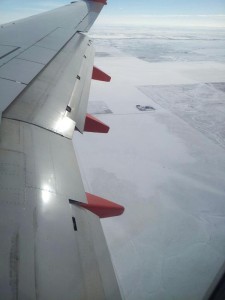
It all seems a little surreal. Less than three weeks ago I was on a plane landing in a very snowy Denver. Waiting for transit to downtown required a 50-minute wait in 8 degree weather. Before that the coldest temperature I’d ever experienced was 11 degrees one September morning shivering on the slopes of Mount Whitney. So this trip broke a personal record.
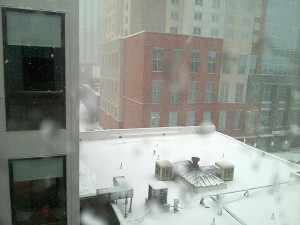
That week also was a city record for Denver, the most snow ever to fall in a single February. This view out the hotel window was on the day the record fell (along with the snow). Among sightseeing opportunities, the Coors brewery would have been walking distance if it sounded like an interesting thing to do. On this cold, snowy afternoon the walk did not sound tempting.
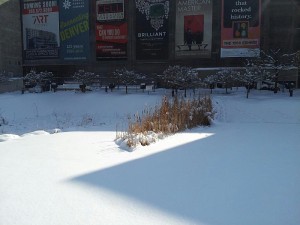 Denver often warms enough to melt some of the snow between storms, so what was on the ground was a nice light snow blanket, not the smothering white wooly layers much of the rest of the country has had to deal with.
Denver often warms enough to melt some of the snow between storms, so what was on the ground was a nice light snow blanket, not the smothering white wooly layers much of the rest of the country has had to deal with.
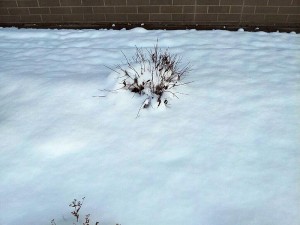 To this subtropical California it was all pretty exotic. So, plants that get frozen like this come back to tell about it? Sounds like an episode of The Walking Dead to me.
To this subtropical California it was all pretty exotic. So, plants that get frozen like this come back to tell about it? Sounds like an episode of The Walking Dead to me.
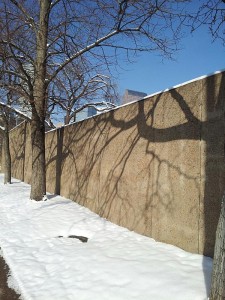
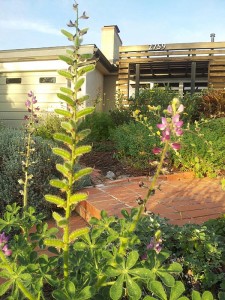
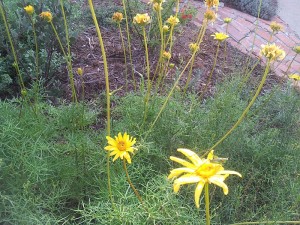
Now, a couple weeks later, back to San Diego, it’s totally “spring” in the gardens around here. Friday was a day spent outside with a bucket and a hose, hydrating new plants and annual wildflowers. And yesterday was the third freakish day with temperatures almost matching those of Palm Springs out in the desert. It is hot. The established plants will be fine if the heat breaks, but the new plants haven’t had a chance to put down mature root systems. The annuals set seed and disappear once the going gets tough, so a little deadheading and extra water will keep them going a few extra weeks. And a few of the perennials respond the same way, including the local sea dahlia, Leptosyne maritima. A few buckets of supplemental irrigation is pretty little investment, especially when you look across the street to the neighborhood lawns.
But the humans have had enough. Can we have our normal weather back for a while, please?

I always expect your plants to be seasonally ahead of mine, but how can the stinging lupine have already gone to seed like that? It looks like June! Does stinging lupine just always bloom way ahead of most other lupines?
There are other lupines already blooming in town, so I’d guess we’re quite a bit ahead of you for many things. 70-90 degrees in January and March will do that!
What a study in contrasts…and perhaps a peek into what the future holds(?)
I think warming is definitely on the menu for us, and it just heightens the drought. Hopefully you’re okay up there? Some of Washington state was in a drought panic themselves.
Oregon too, but not the Willamette Valley. That could change with the warm winter and sparse snowfall in the mopuntains.You may use these HTML tags and attributes:
It’s both strange and scary to think that the same weather patterns that have brought us month after month of far-below-normal temperatures have brought you exceptional out-of-season heat — and that all of it seems to be courtesy of the melting arctic ice which has disrupted the usual air flows both around the arctic and from west to east across North America. I hope this isn’t our new normal, but I fear that it is.